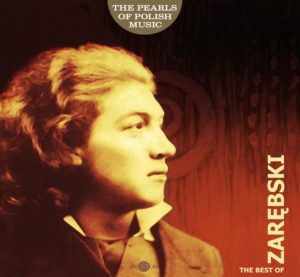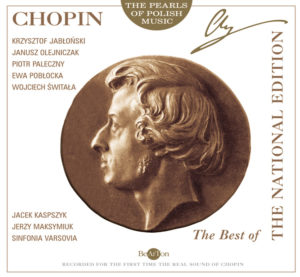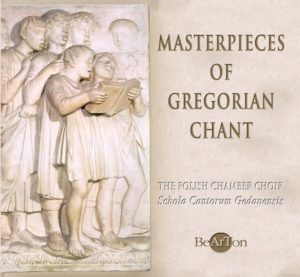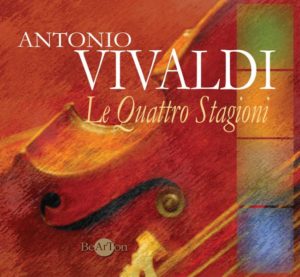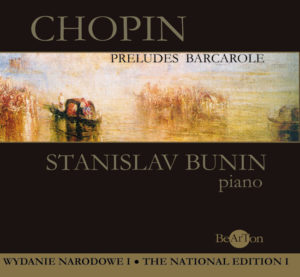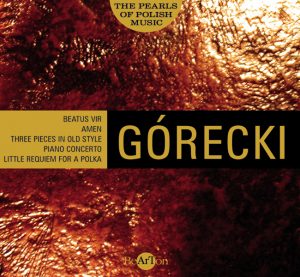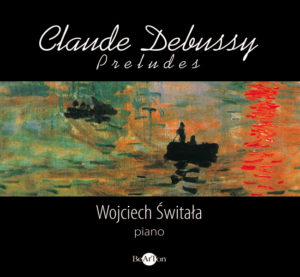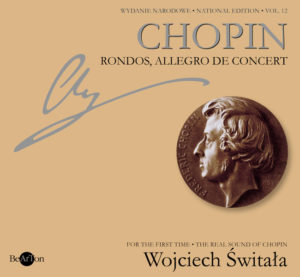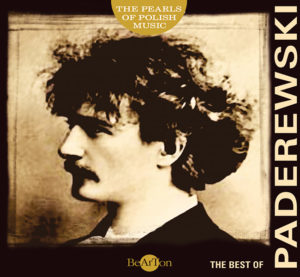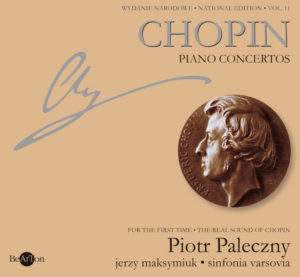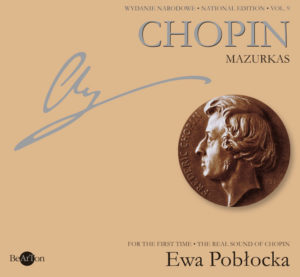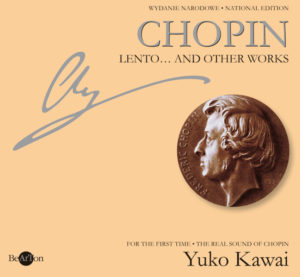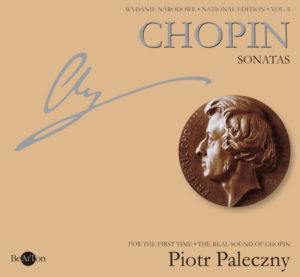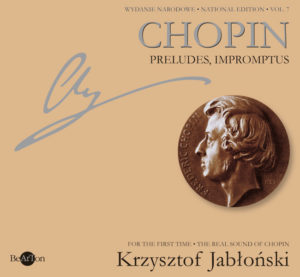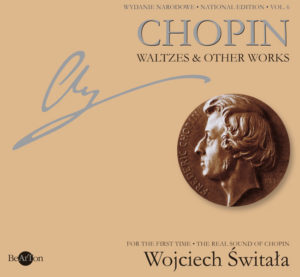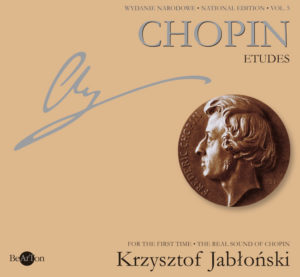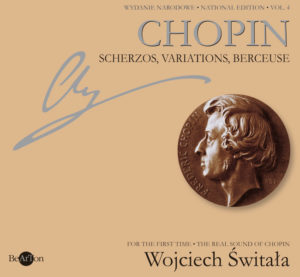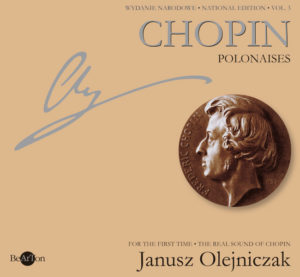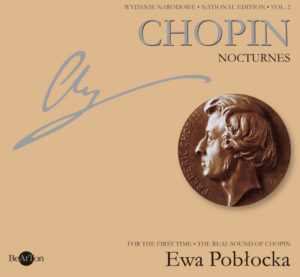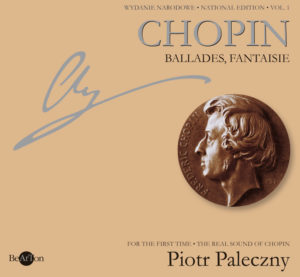Masterpieces of Gregorian Chant
Masterpieces of Gregorian Chant
Cat. No. CDB017
Music disc: CD-AUDIO
Performers:
The Polish Chamber Choir-Schola Cantorum Gedanensis
Jan Łukaszewski – conductor
Stanisław Koryto – organ
Disc content
CANTATE DOMINO
- Repleatur os meum – 2’10”
- Ut queant laxis – 1’15”
TEMPORE ADVENTUS
- Veni Domine – 0’25”
- Creator alme siderum – 0’55”
- Rorate caeli – 2’57”
DIES EST LAETITIALE
- Puer natus est – 1’02”
- Dies est laetitiae – 0’33”
- Adeste fideles – 1’30”
TEMPORE QUADRAGESIMAE
- Attende Domine – 1’33”
- Christus factus est – 2’38”
- De pacem Domine – 0’59”
- Stabat Mater – 1’34”
IN RESURECTIONE DOMINI
- Alleluia – 1’02”
- Surrexit Dominus – 1’49”
- Victimae paschali laudes – 1’49”
- O filii et filiae – 1’08”
IN HONOREM SS SACRAMENTI
- Ave verum Corpus – 1’33”
- Adoro te devote – 1’02”
- Ubi caritas1 – 1’12”
IN HONOREM SS CORDIS IESU
- Cor lesu sacratissimum – 0’38”
- Venite ad me – 0’33”
CANTICA MARIANAE
- Ave Maria – 1’10”
- Ave maris stella – 0’56”
- Salve Regina – 1’46”
- Sub tuum praesitium – 2’06”
IN FESTO S. CAECILIAE
- Caecilia famula tua – 0’29”
- Cantatibus organis – 0’45”
CANTICA POLONICA
- Annua recolamus – 1’30”
- Exultet – 2’40”
- Flectamus genua – Levate – 0’22”
- Hac festa die – 1’10”
- Sanctus – Agnus Dei – 3’23”
- Ortus de Polonia – 0’54’
- Gaude Mater Polonia – 0’31”
MISSA REGIA
- Kyrie – 3’16”
- Gloria – 3’18”
- Credo – 5’04”
- Sanctus – Benedictus – 1’17”
- Agnus Dei – 1’05”
Total time – 59’48”
Nagrody:
Listen a part
42.99złRead more
© ℗ 2003 Bearton
Masterpieces of Gregorian Chant
The liturgical solo chant of the Roman Catholic Church perfectly fused such achievements of antiquity as melismatic setting, syllabic recitative, hymn metre, diatonic mode, antiphonal-responsorial singing and the language of the Romans. Although it was constantly reformed and enriched throughout centuries, a huge monolith of liturgical music has been created. Still, variety has always been accepted in the form of different kinds and versions. This kind of singing is known as plainsong, plainchant, liturgical chant, or Gregorian Chant.
Gregorian Chant has played an important role in European music and culture. It was cultivated not only in the Church, a but also in all schools from the Middle Ages through the whole 18th century. The motifs and titles of Gregorian chant have been used by composers till this day.
The wonderful Gregorian Chant created, cared for and protected by the Church, after the reform of liturgy by the second Vatican Council in 1965 and the introduction of the vernacular for liturgies ceased to be the Church singing par excellance. It became the property of the whole world of music lovers who admire beauty and tradition.
This album presents the works in a more free manner (introducing female voices and the organ), but with a greater artistic perfection. Some stanzas, marked at the titles, have been chosen from longer compositions. The official liturgical book Liber Usualis of 1951 has been our main source of the presented works, arranged according to the traditional Church year.
Repleatur Os Meum. The record starts with this more recent composition expressing the joy of singing in praise of God. The antiphon is combined with Psalm 116, Laudate Domino, of a similar content.
The hymn about St John the Baptist Ut Queant Laxis written by Paul the Deacon in the 8th century provided the basis for the theory and practice of chant teaching (solmization). [LU 1504; LU stands for the Liber Usualis].
The antiphon Veni Domine is used in the Advent liturgy. Come, O Lord, to strengthen us in peace, to make us rejoice in thee with perfect heart [LU 327].
The Advent hymn Creator Alme Siderum (originally Conditor alme siderum) dates from no later than the 10th century. [LU 324]. It is combined with the antiphon Veni Domine.
The responsorial Advent chant Rorate Coeli was composed in Paris presumably by L’abbé Bourget. It was published in 1634 (Directorium chori). The text comes from the Bible. Cf. Isaiah 45: 8 [LU 1868].
The carols in Latin: Puer Natus In Bethleem (14th/15th century) and Dies Est Laetitiae were known in the whole of Europe. In Poland, the songs and their various translations were also very popular, particularly in the 16th century. Their melodies were used as cantus firmi in many polyphonic compositions.
Adeste Fideles, the Christmas chant of Irish origin, has the melody by John Reading to an Old-English text from ca 1746. The Latin text was probably added later (ca 1793) by L’abbé Borderies in France. The carol was extremely popular in many countries, both with the Latin text and in various translations [for the Polish translation see: J. Węcowski’s book Kolędować Małemu, Warszawa 1992, p. 106].
Attende Domine. The responsorial penitential chant of French origin (Priere du Processional Parisien, 1871). The text is based on an old Mozarabic litany [LU 1871].
Christus Factus Est. The elaborate chant with a large compass of the melody was used to demonstrate the skills of a good cantor. The text is based on the Epistle of St Paul to the Philippians (2: 8-9). It forms a gradual for Maundy Thursday and occurs in The Old Tenebrae [LU 653].
The antiphon Da Pacem Domine is a prayer for peace. In the Paris liturgy this music had another text (Deus meminerit testamenti sui, et faciat pacem nec deserat in tempore malo). The antiphon is often performed together with the penitential chant Parce Domine, which asks forgiveness of guilt (Supplicatio) [LU 1867, 1868].

Polish Chamber Choir
The Marian sequence Stabat Mater was attributed to the Franciscan Jacopone da Todi (d. 1306). The studies by the great hymnologist Klemens Blume (d. 1932) indicated that St Bonaventura (d. 1274) was the author. Today we can safely ascribe this beautiful 13th-century Marian Planctus to the Franciscan circles in general, for it could have had several authors. Its simple and moving text was and still is used by numerous composers. It has been many times translated and paraphrased in various languages. It also has a few chanting melodies, of which a simple version (cantus simplex) has been chosen [LU 1874].
The Easter section begins with the Holy Saturday Alleluia, sung three times, each time one tone higher [LU 759].
Surrexit Dominus is the singing from the former Easter Invitatorium. The antiphon Surrexit is alternated with the verses of Psalm 94. We have chosen a newer melody, Alter tonus recentior ad libitum [LU 768].
The Easter sequence Victime Paschali Laudes is attributed to Wipo of Burgundy (d. 1050). The work has been the source of many liturgical mystery plays and songs, such as Christ Has Risen from the Dead or Through Thy Holy Resurrection. This Mass sequence was performed in Poland as early as the 14th century during the Resurrection procession. It had the form of a dialogue between clergymen, who sang in Latin (literaliter) and the common people, who answered in Polish (populus vulgariter). The work has had many Polish translations and the sequence occurs in a number of manuscripts [LU 780].
O Filii Et Filiae. A newer chant of French origin, it has the text by Jean Tisserand (d. 1494), the chaplain of Queen Anne of Brittany, to the melody of the 13th-century De quibus nos. In Liber Usualis (p. 1875) the chant is written in the contemporary mensural notation (3 metre).
Ave Verum Corpus is a short Eucharistic hymn. It used to be a trope to the Sanctus and it was sung during Mass after the Benedictus. It is traditionally considered to be the sequence of the 13th-century Pope Innocent IV. The piece comes from the collection of the Solesmes Benedictines (LU 1856).
The text of the hymn Adoro Te Devota is ascribed to St Thomas Aquinas (d. 1274) and the melody to Adam de St. Victor of Paris (12th century). Also a new melody by E. Chabot (1924) is known (LU 1856).
Ubi Caritas Est Vera, earlier known as Ubi caritas et amor, was connected with Mandatum (the commandment of love, cf. John 13: 14), the ceremony of the washing of feet. The chant of Benedictine provenance (Reichenau) dates back to the 13th century. The new text of the est vera is quoted from the Liber Cantualis of Abbaye Saint-Pierre de Solesmes, 1978, p. 108 (cf. LU 1855).
Cor Iesu Sacratissimum is an appeal to the Sacred Heart of Jesus (Invocatio ad SS. Cor Iesu). This short prayer should be chanted thrice (LU 1853).
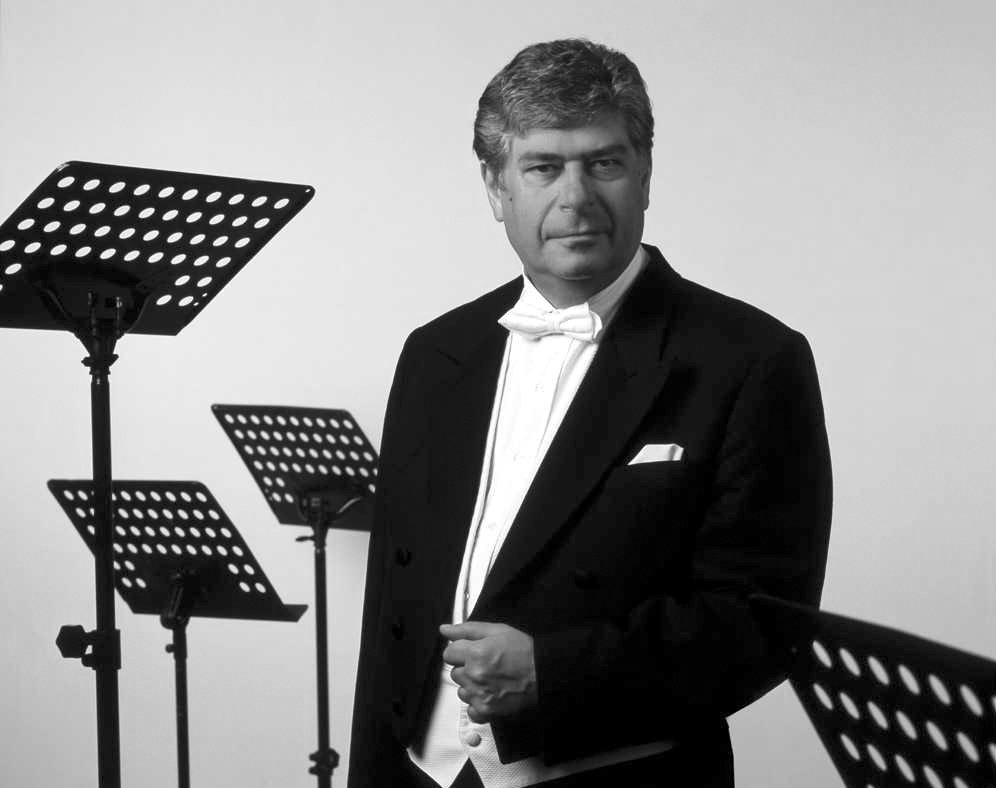
Jan Łukaszewski
Venite Ad Me (Come unto me, all ye that labour and are heavy leaden…). This ever popular prayer is used as a vesper antiphon at the feast of the Sacred Heart of Jesus (LU 977).
Ave Maria is the best known prayer to the Virgin Mary. It consists of Archangel Gabriel’s greeting (Luke 1: 28), the words of St Elizabeth (Luke 1: 42) and the closing petition. The first two parts were known as early as the 6th-9th centuries as the Angelic Salutation. The petition Sancta Maria was not added until the 13th century. The final form of the prayer was established by Pope Pius V, who introduced it into the breviary of 1568. Since then Ave Maria has become a favourite prayer of the faithful. Its text, most often used by composers, has several chanting melodies. We present the one from the Solesmes Benedictine collection (LU 1861).
Ave Maria Stella is a beautiful Marian hymn attributed to Paul the Deacon (d. 799). It has a number of melodies. The Liber Usualis gives three of them and another one to the fourth stanza, Monstra te esse matrem, chosen here (LU 1863). The hymn is a daily prayer in many congregations and orders.
The Marian antiphon Salve Regina must have been written by the turn of the 12th century. It has a more elaborated syllabic version from the time it was originally composed and a simpler one, tonus simplex, from the 13th century. We use the latter (LU 279), which was extremely popular in Poland, where some Salve foundations and fraternities existed. The piece has been often translated and paraphrased, as it is also used at funeral ceremonies.
Sub Tuum Praesidium, one of the oldest Marian hymns, was created in the East in the early centuries of Christianity. Connected with the Loreto Litany, it is widely used in liturgy. In Poland, this kind of chant, both in its monodic Latin and polyphonic Polish forms, was performed during prayers for the Fatherland, especially in hard times like war or bondage – in churches as well as at patriotic demonstrations (LU 1861).
As liturgical chant devoted to St Cecilia, patroness of music, should not be missing from our album, we present two vesper antiphons: Caecilia Famula Tua (LU 1757) and Cantatibus Organis (LU 1756).
Annua Recolamus, a sequence devoted to St Adalbert, is the earliest music piece connected with Poland. One of the stanzas tells about Polonia ergo tanti sepeliens floret martyrii pignora. The sequence was probably written in 1001 at the Benedictine Abbey in Reichenau, where its manuscript with chironomic notation has been preserved.
The Holy Saturday Exsultet from the Tyniec Sacramentary (ca 1060) is the oldest preserved music piece in Poland, with only partial music notation, in chironomic neumes. The studies by the author of these words have shown that the codex itself was commissioned in Cologne by the king of Poland Bolesław II the Bold, while the 12th-century music voices and the text Flectamus Genua – Levate (also in chironomic notation) were written down at Tyniec near Cracow. These two invocations have an outstanding and original form. In the same ceremony for Good Friday, the simple and the more elaborated versions alternate several times. These slight deviations in the two versions testify to a great musical sense and high performance level of choral singing in early Poland.
The oldest Polish sequence, Hac Festa Die, in praise of St Adalbert, was probably written in Gniezno as early as the 12th century. It belongs to the socalled transition sequences, with irregular structure but already rhymed. Its stanzas often end in the letter „a”. The text refers to Poland and Poles. At the end, St Adalbert, patron saint of Poland is addressed: Preserve your kin from Poland, who gratefully sing Alleluia to you.
Sanctus-Agnus Dei (Darling Maiden)
The Graduale Romano – Franciscanum from the 1st half of the 13th century (MS No: M 205), kept by the convent of Poor Clares in Cracow, contains Polish annotations on performance and later additions from the turn of the 14th century. This addition comprises Sanctus – Agnus Dei chants with a melody (?), interwoven with a text in Polish written in vermilion: Darling Maiden… if it’s… not you… there’ll be another. An amazing thing: a Polish love song (!) or rather, I believe, a monastic song from the so-called Interrogatorium for novices prior to their admittance to convent or taking vows, was inserted into a venerable liturgical chant. It is an unusual and peculiar example.
Ortus De Polonia is an antiphon to St Stanislaus, patron saint of Poland. The text is by Wincenty of Kielce (13th century); the melody comes from a 15th-century Viennese manuscript (Wien, Oesterr. Nationalbibliothek, COD 1765, Photo Nr M 48162).
Gaude Mater Polonia is a hymn to St Stanislaus. The author of the text from ca 1255, Wincenty of Kielce, presumably also adapted the melody from some Dominican sources known to him. The hymn was very popular in Poland and had many transmissions. In the 17th century it was included in the Proprium Sanctorum Regni Poloniae. Its text and melody can be found in the Kielce Antiphonary of 1372, kept in the Archives of Kielce Cathedral (f. 226).
Missa Regia is a liturgical chant for the mass in the Dorian mode by Wallonian composer Henri de Tier (1610-1684), better known as Henri du Mont (or Dumont), an organist and choirmaster to the court of Louis XIV. Unlike all known Gregorian masses, the Royal Mass (Messe Royale) forms a compact whole both thematically and structurally. It has a remarkably beautiful melodic line. Three liturgical books: the French Liber Usualis – Paroissien Romain… Paris, Toutnai Romae 1984 and the Liber Usualis of 1951 contain three masses by this composer in church modes I, II and VI.
Jan Węcowski

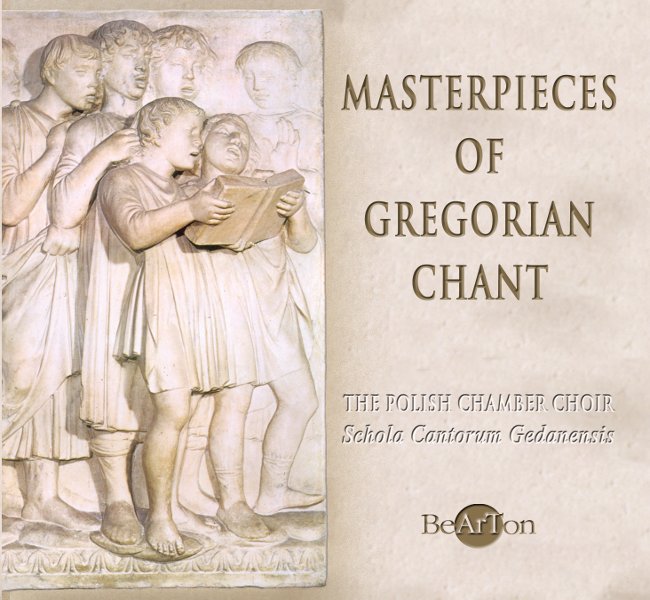



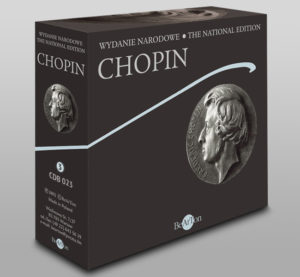
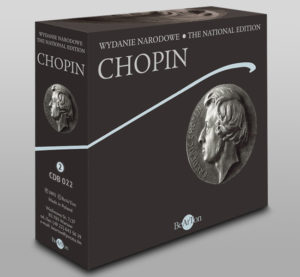
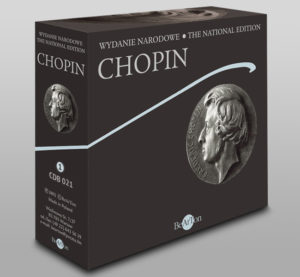
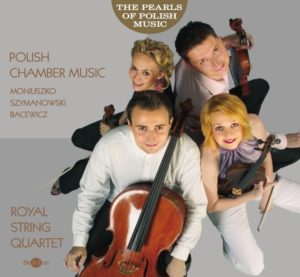
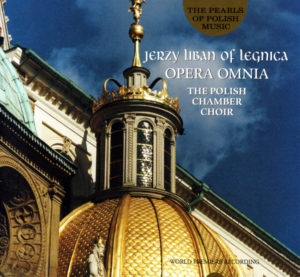
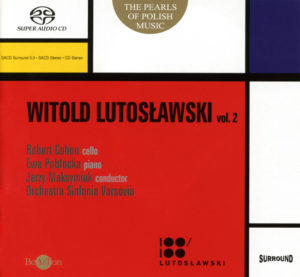
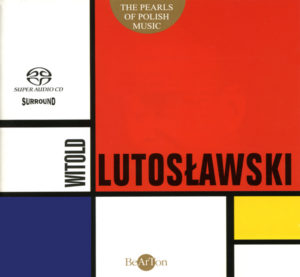
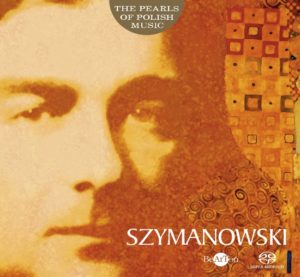
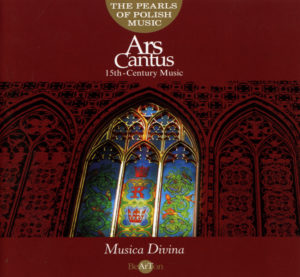
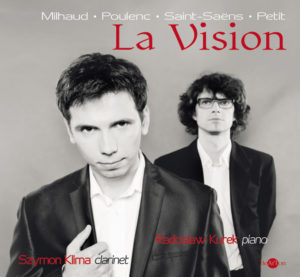
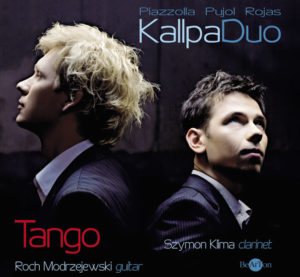
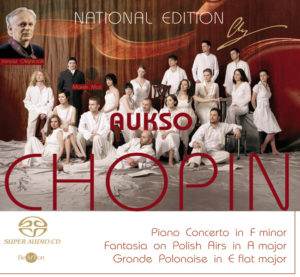
![Chopin – Walce [B] i inne utwory CDB047](https://www.bearton.pl/wp-content/uploads/Chopin-Walce-B-i-inne-utwory-CDB047-A-300x277.jpg)
![Chopin – Pieśni [B] CDB046](https://www.bearton.pl/wp-content/uploads/Chopin-Piesni-CDB046-A-300x277.jpg)
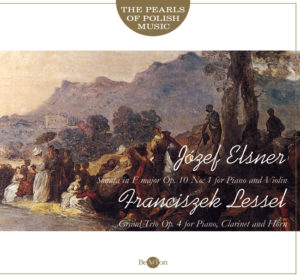

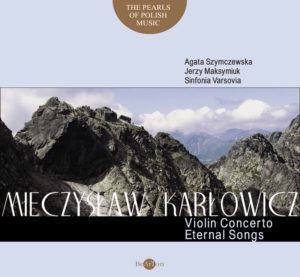
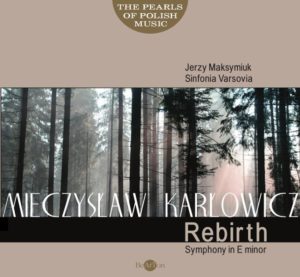
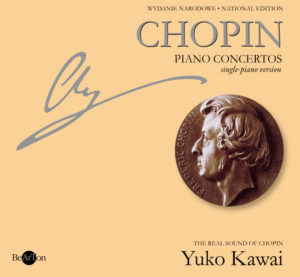
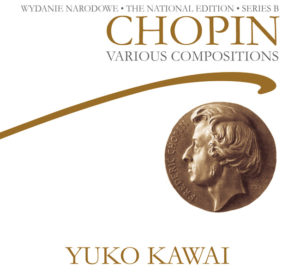
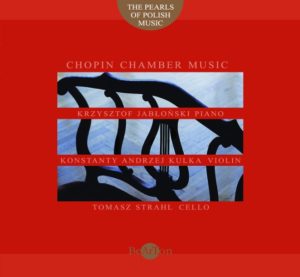
![Chopin - Mazurki i inne utwory [B] CDB038](https://www.bearton.pl/wp-content/uploads/Chopin-Mazurki-i-inne-utwory-B-CDB038-A-300x277.jpg)
![Chopin – Polonezy [B] CDB037](https://www.bearton.pl/wp-content/uploads/Chopin-Polonezy-B-CDB037-A-300x277.jpg)
